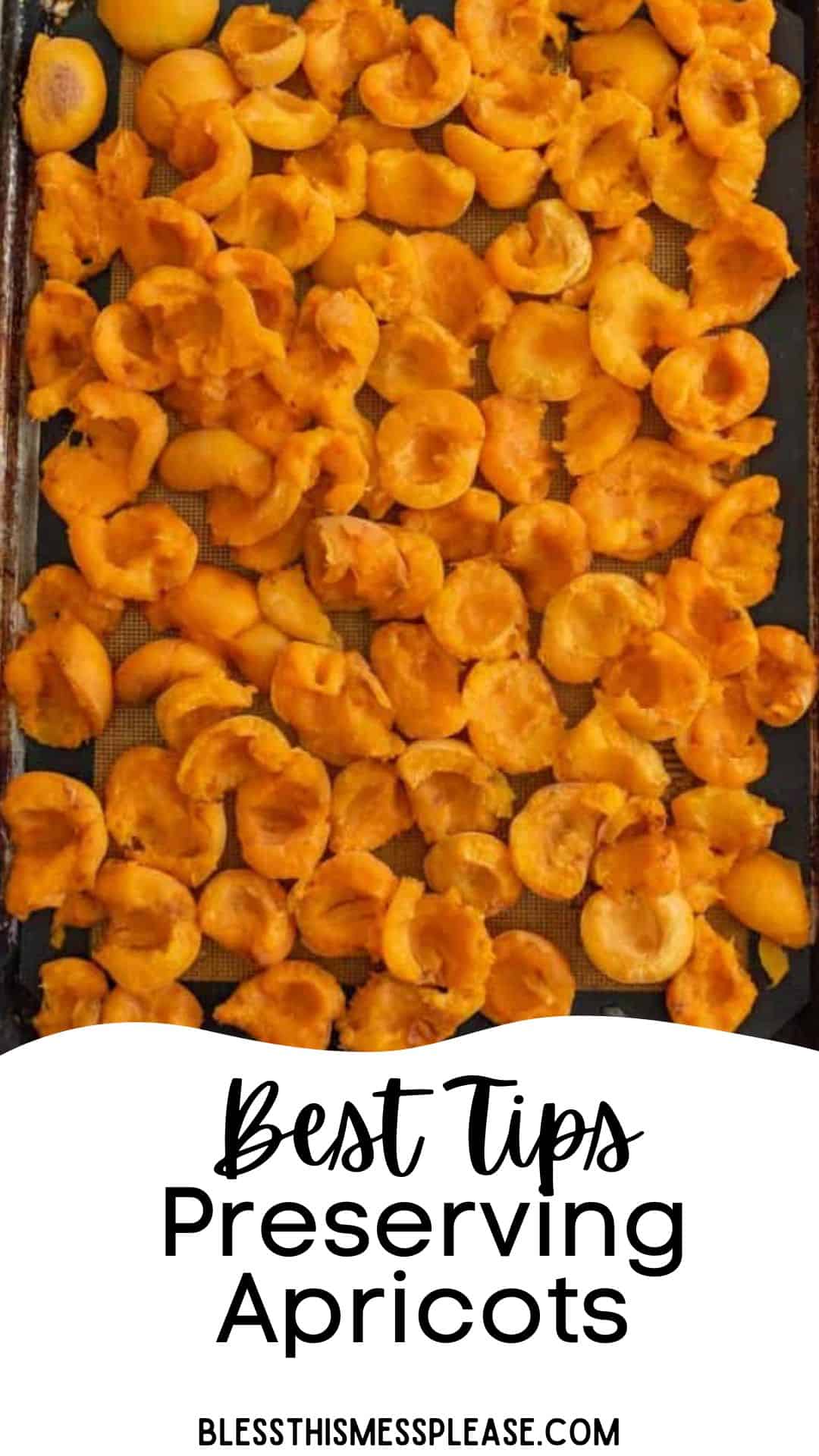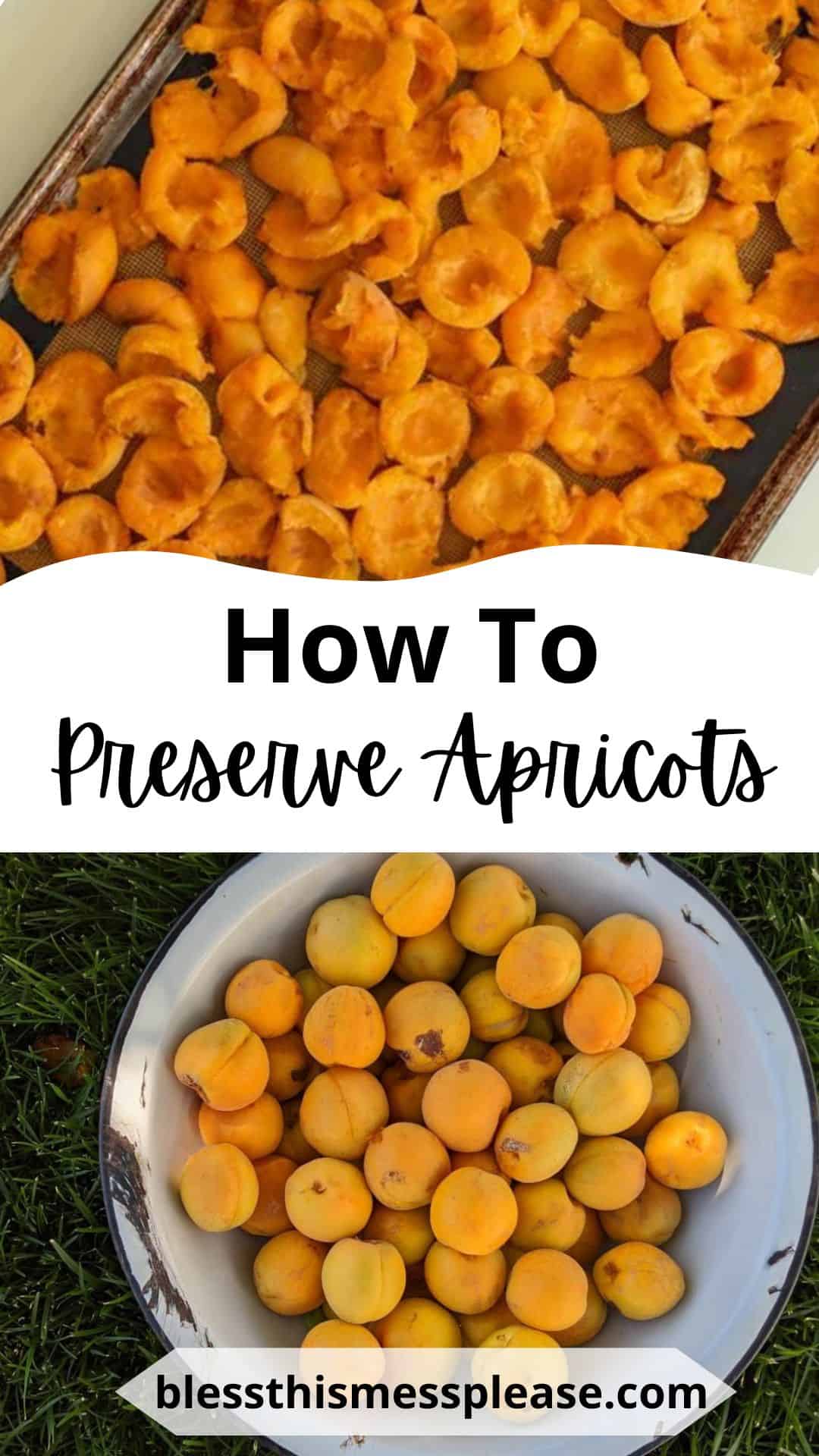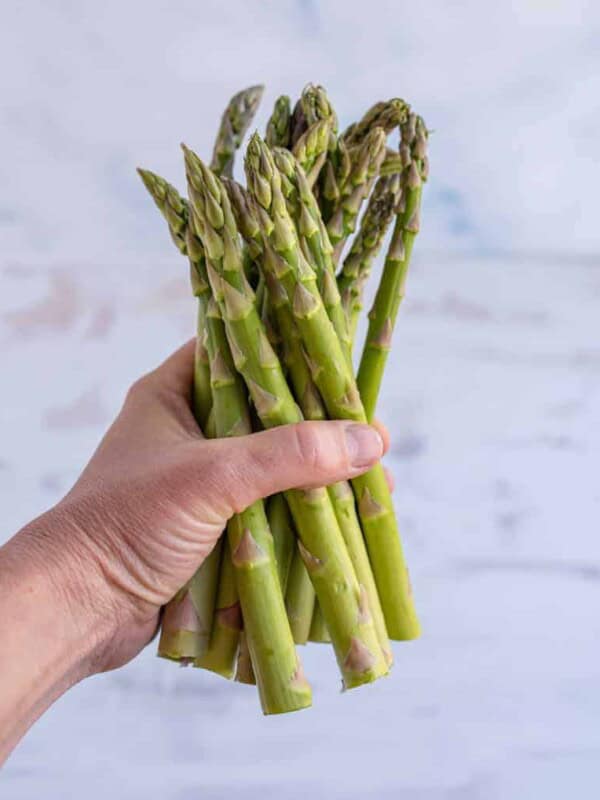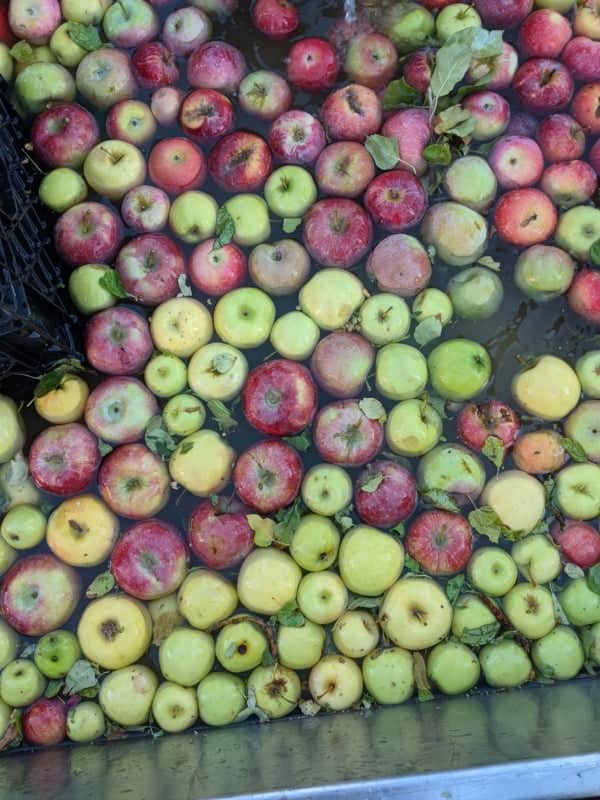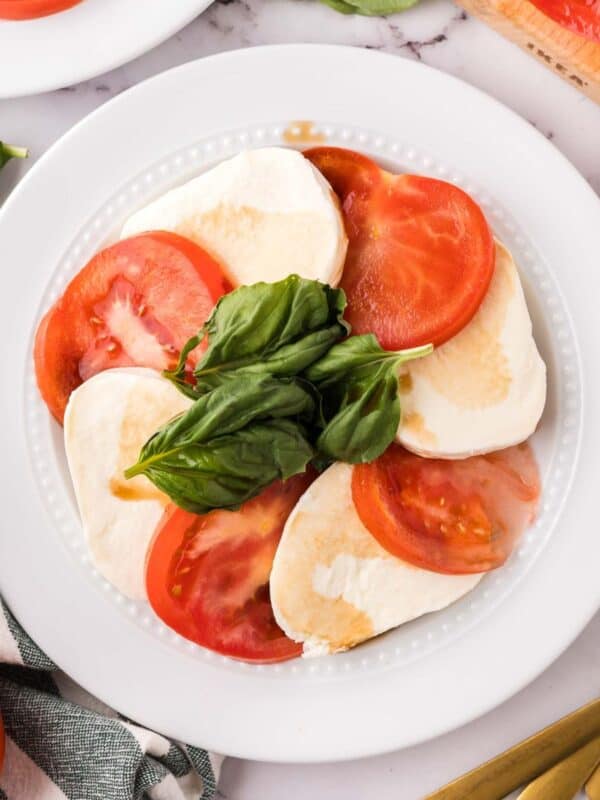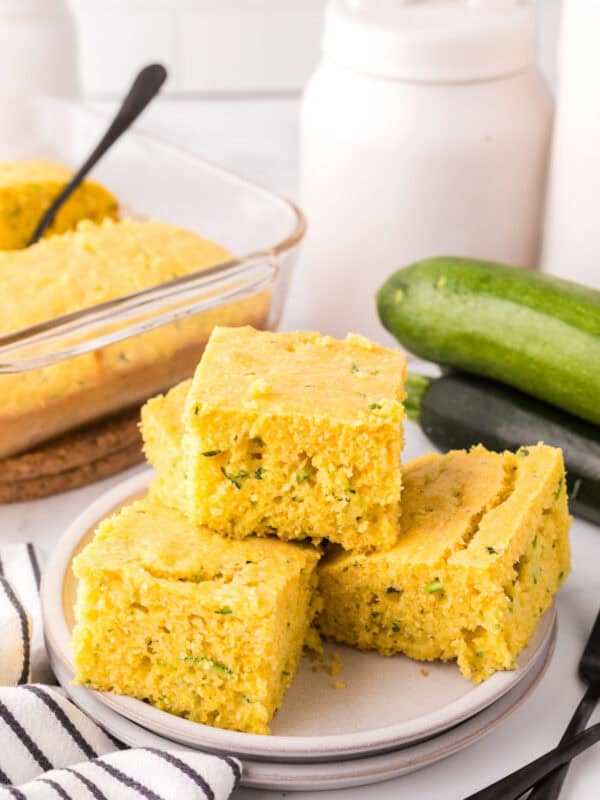How To Preserve Apricots
on Apr 07, 2025, Updated Apr 17, 2025
This post may contain affiliate links. Please read our disclosure policy.
Learn the best methods for how to preserve apricots with easy drying, freezing, and canning techniques. Keep your apricots fresh and flavorful year-round!

Preserving Guide: How To Preserve Apricots
Learning how to preserve apricots is a bit of an old-fashioned skill, but such a good one to master.
Whether you’re drying them for lunchbox snacks, freezing them for smoothies, or canning them for holiday gifts, preserved apricots bring a burst of summer sunshine to even the darkest winter days!
Table of Contents

When To Harvest Apricots
They must be completely yellow over the entire surface but not too soft. They should be picked while still fairly firm.
How To Store Apricots
In the refrigerator
Dehydrating Apricots
- CUT: Pit and halve. May slice if desired.
- DIPPING: Use ascorbic acid mixture or fruit juice dip
- DEHYDRATOR: 24-36 hours
- APPEARANCE WHEN DRY: springy: no moist area in center
Canning Apricots
QUANTITY: An average of 16 pounds is needed per canner load of 7 quarts; an average of 10 pounds is needed per canner load of 9 pints. A bushel weighs 50 pounds and yields 20 to 25 quarts-an average of 2¼ pounds per quart.
Choose ripe, mature fruit of ideal quality. Allow apricots to ripen for at least 1 day after harvest.
Can be packed in very light, light, or medium syrup. They can also be packed in water apple juice, or white grape juice. Prepare the liquid and keep it hot.
Peeling skins is optional. If peeling skins, dip fruit in boiling water for 30 to 60 seconds until skins loosen. Dip quickly in cold water and slip off skins. Cut in half, remove pits, and slice (if desired). Dip in ascorbic acid mixture to prevent darkening.
HOT PACK
- Remove apricots from anti-darkening solution and drain well. In a large saucepan, heat drained fruit in syrup, water, or juice. Bring to a boil.
- Pack hot fruit into hot jars, leaving ½-inch headspace. When packing halves, place them cut side down. Fill jars to ½ from top with hot liquid. Remove air bubbles. Wipe jar rims. Adjust lids. Process in a boiling water bath.
Process Time: Pints: 20 minutes Quarts: 25 minutes
RAW PACK
- Remove apricots from anti-darkening solution and drain well. Pack raw fruit into hot jar, leaving 1/2 -inch headspace. When packing halves, place them cut side down.
- Fill jars with hot liquid to ½-inch from the top. Remove air bubbles. Wipe jar rims. Adjust lids. Process in a Boiling water bath.
Process Time: Pints: 25 minutes Quarts: 25 minutes

Freezing Apricots
PREPARING APRICOTS
- Select firm, ripe, uniformly yellow apricots.
- Sort, wash, halve and pit.
- Peel and slice if desired. If apricots are not peeled, heat them in boiling water 1/2 minute to keep skins from toughening during freezing.
- Cool in cold water and drain.
SYRUP PACK
- Use cold 40 percent syrup. For a better quality frozen product, add 3/4 teaspoon ascorbic acid to each quart of syrup.
- Pack apricots directly into containers.
- Cover with syrup, leaving headspace.
- Place a small piece of crumpled water-resistant paper on top to hold fruit down.
- Seal and freeze.
SUGAR PACK
- Before combining apricots with sugar, give the fruit an ascorbic acid treatment to prevent darkening
- Mix 1/2 cup sugar with each quart of fruit.
- Stir until sugar is dissolved.
- Pack apricots into containers and press down until fruit is covered with juice, leaving headspace.
- Place a small piece of crumpled water-resistant paper on top to hold fruit down.
- Seal and freeze.
🍎🫙 Get a free Preserving Guide for all the details to dehydrate, can, and freeze 42 fruits and vegetables — get the FREE GUIDE here!
Expert Tips
- Perfect Positioning: When canning apricot halves, place them cut-side down in your jars. This little trick helps maintain their shape and creates a more beautiful final product.
- Crumpled Paper Trick: When freezing apricots, place a small piece of crumpled water-resistant paper on top of your packed fruit. This keeps the fruit submerged in the syrup and prevents freezer burn!
- Know Your Options: Don’t limit yourself to just one preservation method! Dehydrating creates chewy, intensely flavored treats, while freezing preserves that fresh-picked taste, and canning provides ready-to-use fruit for cobblers and pies, and jam!

More Goodies From The Farm
Preserving Guide
How To Preserve Asparagus
Preserving Guide
How To Preserve Apples
Salads
Caprese Salad
Cornbread Recipes
Zucchini Corn Bread
Did you use any of these preserving tips? Leave a note below in the comments or share it on Instagram, Facebook, or Pinterest!

